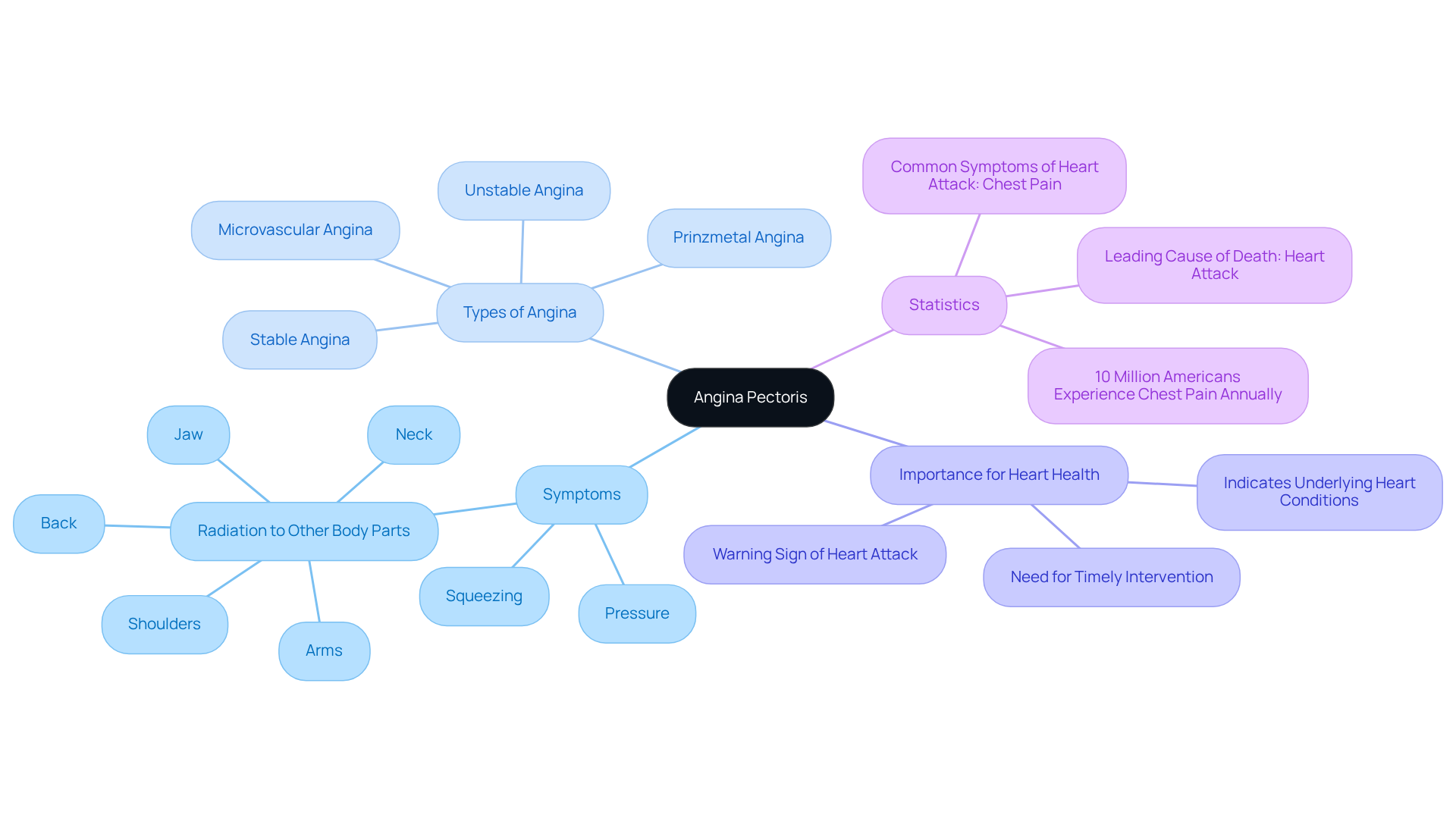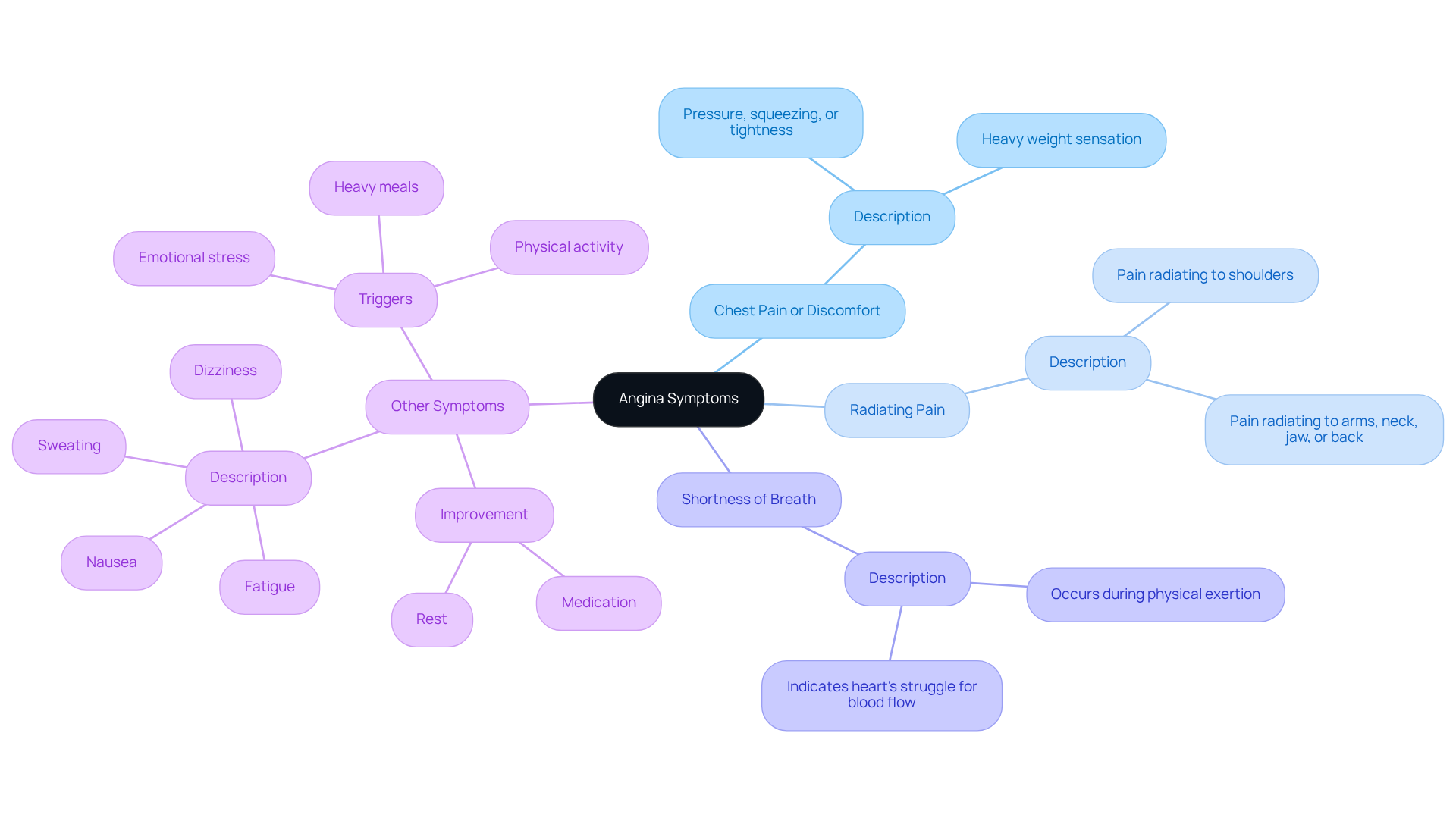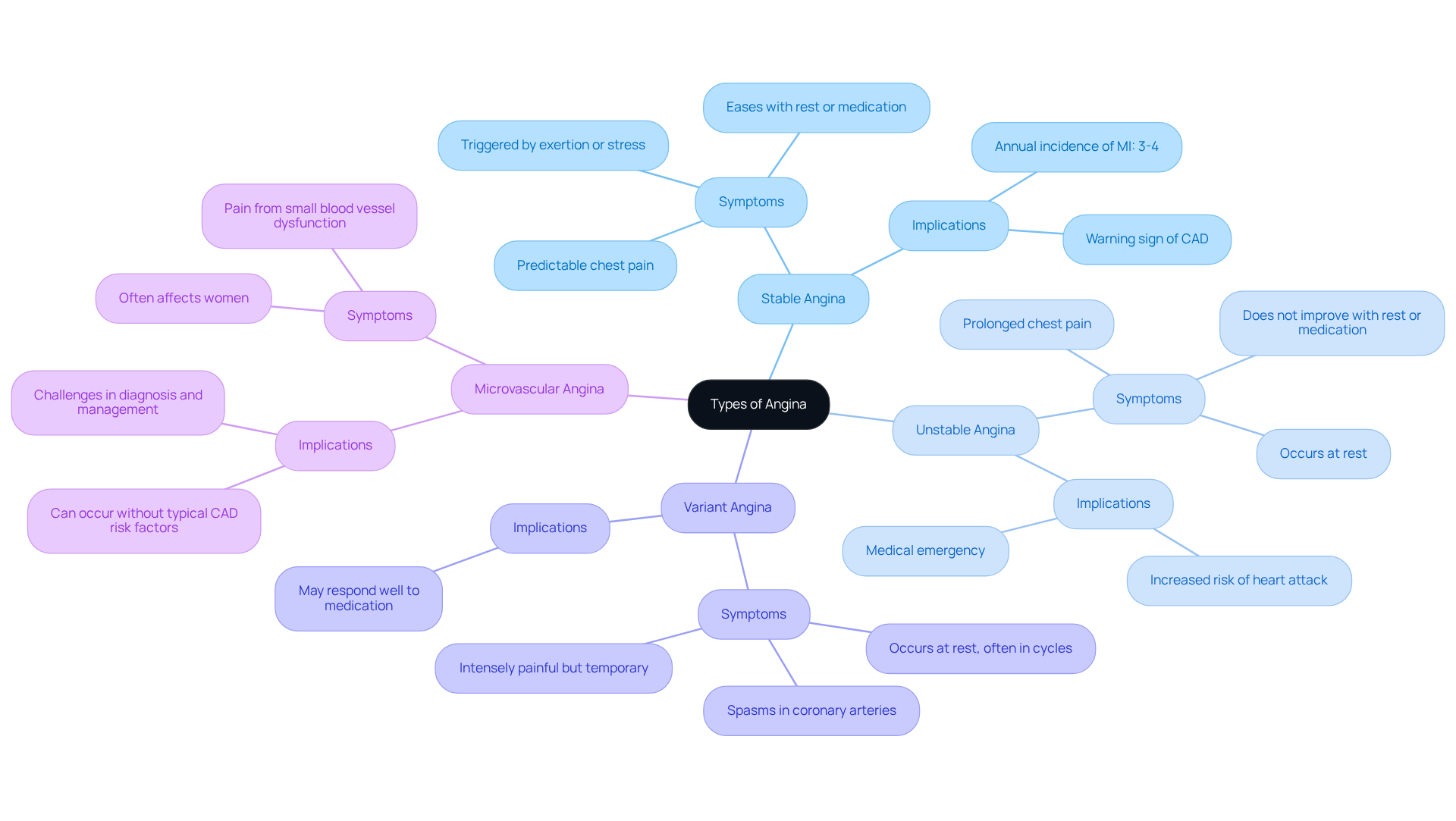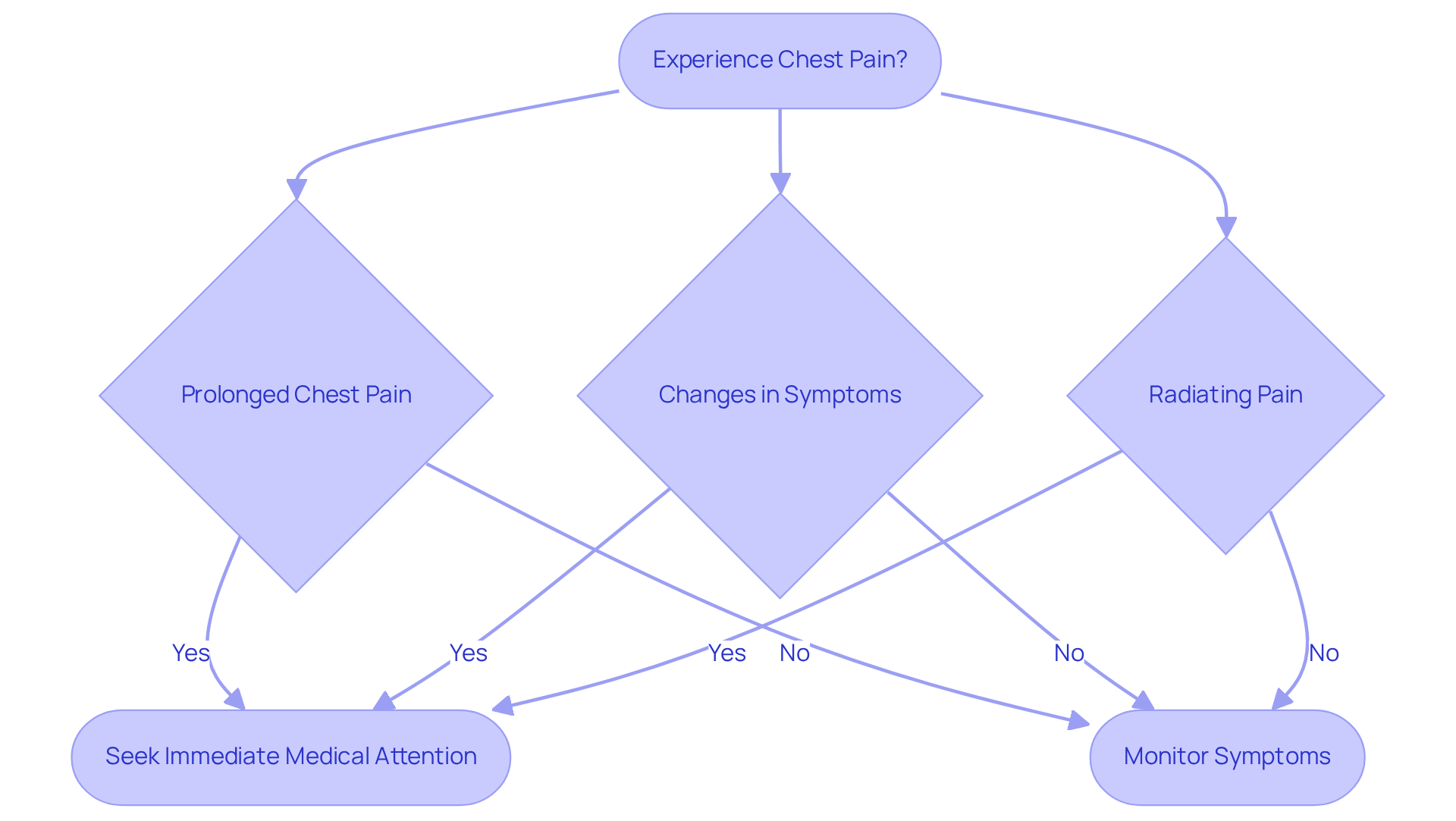


Angina often presents as chest pain or discomfort, which many describe as a feeling of pressure, squeezing, or heaviness. This discomfort can extend to areas like the shoulders, arms, neck, jaw, or back. It’s essential to recognize these signs, as they can indicate underlying cardiovascular issues. Understanding these symptoms is crucial for timely medical intervention, which can make a significant difference in your health.
Have you noticed any of these symptoms in yourself or a loved one? It’s important to pay attention to what your body is telling you. The article outlines various types of angina and their associated symptoms, highlighting the importance of being aware of these signals. By recognizing them, you can take proactive steps towards your health and well-being.
Remember, you are not alone in this. Seeking help is a strong and wise decision. If you have any concerns, please reach out to a healthcare professional who can provide support and guidance tailored to your needs. Your health matters, and there are people ready to help you navigate this journey.
Angina pectoris is a vital signal regarding heart health, often presenting as chest pain or discomfort due to insufficient blood flow to the heart. With approximately 10 million Americans experiencing this symptom each year, it is crucial to grasp its complexities for effective management and timely intervention.
Have you ever wondered how the sensations of angina can differ among individuals? Understanding the distinction between stable and unstable angina is essential. This exploration will guide you through the intricate landscape of angina symptoms, their significance, and the critical signs that require immediate medical attention.
Remember, you are not alone in this journey, and support is available to help you navigate your heart health.
This condition, known as angina pectoris, serves as an important warning sign regarding cardiovascular health. It is characterized by chest pain or discomfort that arises from insufficient oxygen-rich blood reaching the heart muscle. Primarily linked to coronary artery disease (CAD), angina occurs when narrowed or blocked arteries hinder blood flow. What does angina feel like? You may experience it as a feeling of , which can radiate to your shoulders, arms, neck, jaw, or back.
Did you know that about 10 million Americans experience chest pain each year? This highlights how common it is as a symptom of CAD. Understanding this condition is vital, as it indicates that your heart is under stress and may be at risk for more serious complications, including heart events. Cardiologists stress the importance of recognizing these symptoms. As one expert pointed out, "The number one cause of death in America is heart attack, and the top symptom of a heart attack is chest pain, so people should take such pains seriously."
Real-life examples illustrate the various forms of chest pain. For instance, stable angina often occurs predictably during physical activity and subsides with rest, while unstable angina may arise unexpectedly and last longer than 15 minutes, requiring immediate medical attention. Understanding what does angina feel like is crucial for timely intervention and effective heart health management. Remember, you are not alone in this, and seeking help is a positive step towards better health.

Angina symptoms can vary significantly from one individual to another, yet there are several common characteristics that many people report experiencing:
In addition to this, real-world encounters demonstrate the variability of chest pain manifestations. For instance, some patients may experience only mild discomfort, while others report severe pain that significantly impacts their daily activities. Expert insights reveal that almost fifty percent of all patients with chest pain experience non-obstructive coronary artery disease (ANOCA), where indications may not align with conventional expectations of chest pain. This can make diagnosis and treatment more challenging.
is essential. Identifying the symptoms of chest pain can lead to prompt medical action, ultimately enhancing patient outcomes and quality of life. If you or someone you know is experiencing these symptoms, please consider seeking support. Remember, you are not alone, and there are caring professionals ready to help you navigate this journey.

Angina presents itself in various forms, each with distinctive symptoms and implications for heart health that are important to understand:
Statistics show that patients with refractory chest pain, which involves frequent episodes despite treatment, account for 5 to 10% of those with stable CAD. Understanding what angina feels like is essential for effective management and prevention of more serious cardiovascular events. Cardiologists emphasize the importance of recognizing what angina feels like, as unstable chest pain poses a greater risk of myocardial infarction compared to stable chest discomfort.
Your health and well-being are paramount, and recognizing these signs can lead to . If you have any concerns or experience these symptoms, please reach out to a healthcare professional for support.

Recognizing when chest pain symptoms may indicate a more serious condition is crucial for your health, especially for those with risk factors such as a family history, high blood pressure, high cholesterol, or diabetes. It’s important to seek immediate medical attention if you experience:
Recognizing these warning signs can be life-saving, as they may signal an impending heart attack. Did you know that approximately 85% of individuals over 50 suffer from atherosclerotic coronary disease? This makes it even more essential to be aware of these signs. At Amavita Heart and Vascular Health®, our preventive cardiology approach blends advanced risk assessment tools with personalized interventions to ensure a precise diagnosis without delay. Typically, last around five minutes or shorter. In practical situations, patients experiencing unstable chest discomfort often share that prompt identification and therapy helped avert severe cardiovascular incidents. Cardiologists emphasize that any notable change in chest pain symptoms should prompt a conversation with your healthcare provider about when to seek emergency assistance. As the Cleveland Clinic highlights, "chest pain is always worth taking seriously." It’s your body’s way of indicating that something isn’t right. Additionally, if you notice early warning signs of a heart attack or if stable angina worsens unexpectedly, please call emergency services immediately. This proactive approach can lead to timely intervention, potentially saving lives.

Understanding angina is vital for recognizing its symptoms and seeking timely medical intervention. This condition acts as a significant warning sign of cardiovascular health issues, primarily linked to coronary artery disease. By identifying sensations associated with angina—such as chest pain, radiating discomfort, and shortness of breath—individuals can take proactive steps towards managing their heart health.
The article explores the various forms of angina, including:
Each possessing distinct characteristics and implications. It highlights the importance of recognizing warning signs that require immediate medical attention, such as prolonged chest pain or changes in the frequency and severity of symptoms. By understanding these nuances, individuals can navigate their health more effectively, ensuring they are prepared to seek help when needed.
Ultimately, being informed about what angina feels like and recognizing its symptoms can be life-saving. Awareness of these signs not only aids in preventing serious cardiovascular events but also empowers individuals to advocate for their health. It is essential to prioritize heart health by seeking medical advice if experiencing any concerning symptoms, as early intervention can significantly improve outcomes. Remember, you are not alone in this journey; reaching out for support can make all the difference.
What is angina?
Angina, also known as angina pectoris, is a condition characterized by chest pain or discomfort due to insufficient oxygen-rich blood reaching the heart muscle.
What causes angina?
Angina is primarily linked to coronary artery disease (CAD), which occurs when narrowed or blocked arteries hinder blood flow to the heart.
What does angina feel like?
Angina may feel like pressure, squeezing, or heaviness in the chest, and it can radiate to the shoulders, arms, neck, jaw, or back.
How common is angina among Americans?
Approximately 10 million Americans experience chest pain each year, which is a common symptom of coronary artery disease.
Why is it important to recognize angina symptoms?
Recognizing angina symptoms is vital because it indicates that the heart is under stress and may be at risk for more serious complications, including heart attacks.
What are the different types of angina?
Stable angina occurs predictably during physical activity and subsides with rest, while unstable angina may arise unexpectedly and last longer than 15 minutes, requiring immediate medical attention.
What should you do if you experience symptoms of angina?
If you experience symptoms of angina, it is crucial to seek medical attention, as timely intervention is important for effective heart health management.